Fish farming is now an important source of livelihood for many and is a sustainable means of supplying enough seafood to meet the increasing demand. The right type of pond is one of the foundational aspects of successful fish farming. Different types of ponds have different purposes and pros for different species of fish, scales of farming and geographical locations.
This blog will examine various types of ponds for fish farming, how they are used, and how geomembrane pond liners help make ponds more efficient and last longer.
Why Ponds Are Crucial for Fish Farming
Ponds provide a controlled environment where fish grow and reproduce best. They also provide easy access for feeding, monitoring, and harvesting, which makes them indispensable in modern aquaculture.
Types of Ponds for Fish Farming
Here’s a detailed look at the types of ponds commonly used in fish farming:
1. Excavated Ponds
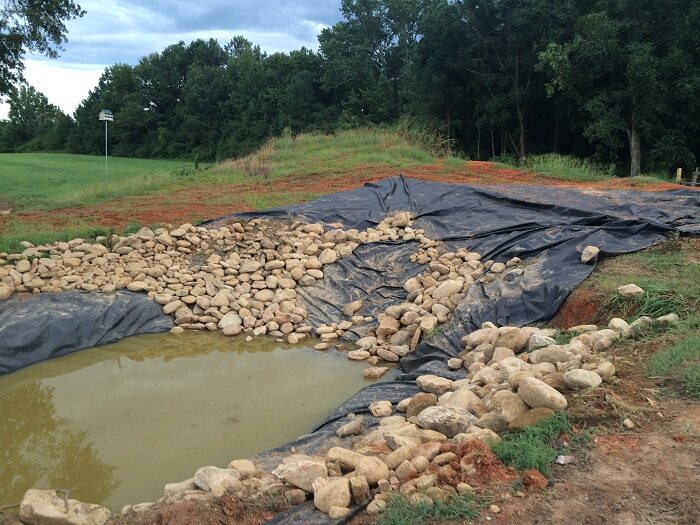
Excavated ponds are the most basic type, created by digging a depression in the ground. These are ideal for small-scale fish farming and areas with adequate soil moisture.
- Advantages:
- Cost-effective for small projects.
- Easy to construct in areas with good water retention soil.
- Challenges:
- Requires regular maintenance to prevent leaks.
- May not be suitable for regions with porous soil.
Pro Tip: Using geomembrane pond liners in excavated ponds can prevent water seepage and ensure higher efficiency.
2. Embankment Ponds
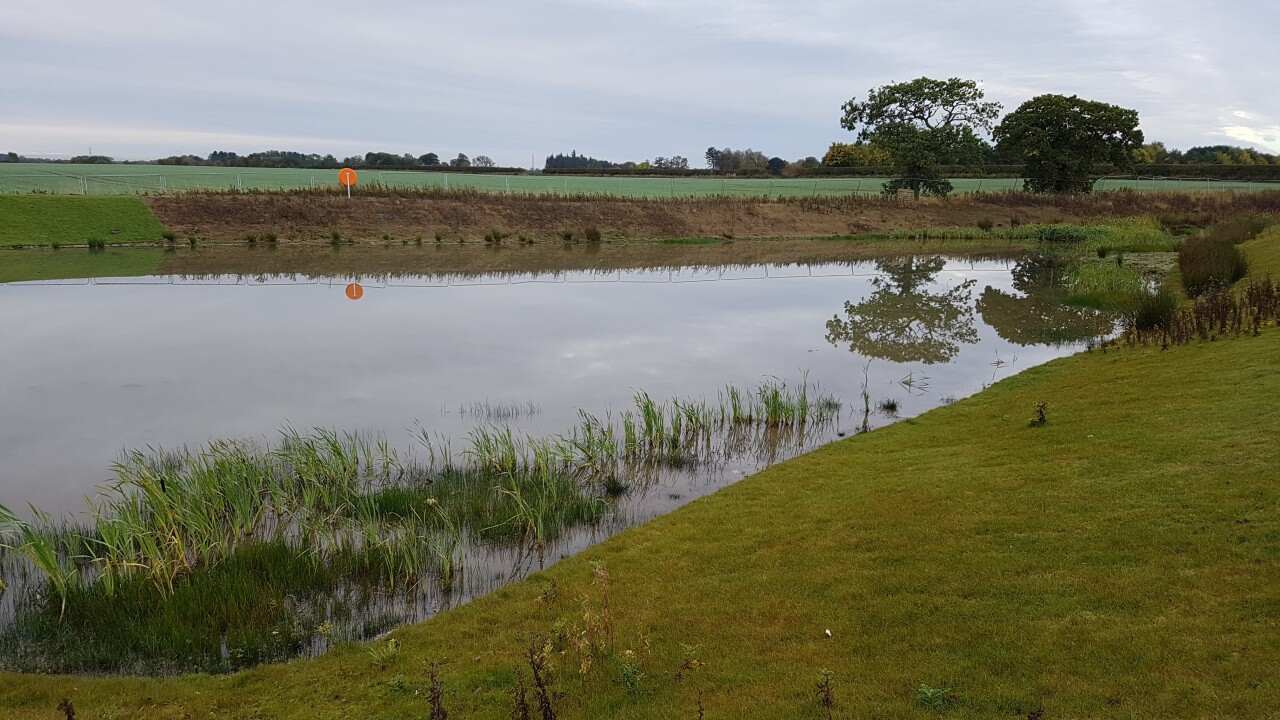
Embankment ponds are built by constructing dikes or walls to hold water. These ponds are often located in low-lying areas where rainwater or natural water sources can be collected.
- Advantages:
- Can be used in hilly or uneven terrain.
- Suitable for large-scale fish farming ponds.
- Challenges:
- Requires proper drainage systems.
- High initial construction cost.
3. Concrete Ponds
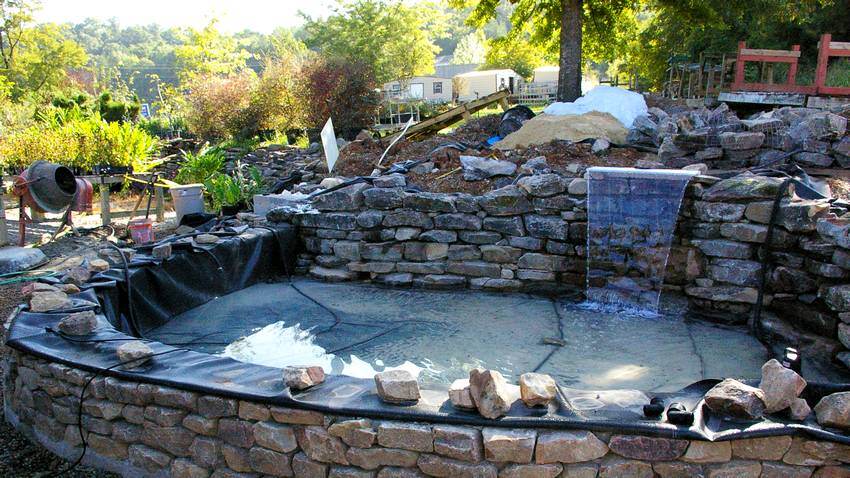
Concrete ponds are man-made structures that use cement and bricks to create a durable and permanent fish farming solution.
- Advantages:
- Highly durable and long-lasting.
- Easy to clean and maintain.
- Challenges:
- High construction and maintenance costs.
- Limited flexibility in design and location.
4. Plastic or Tarpaulin Ponds
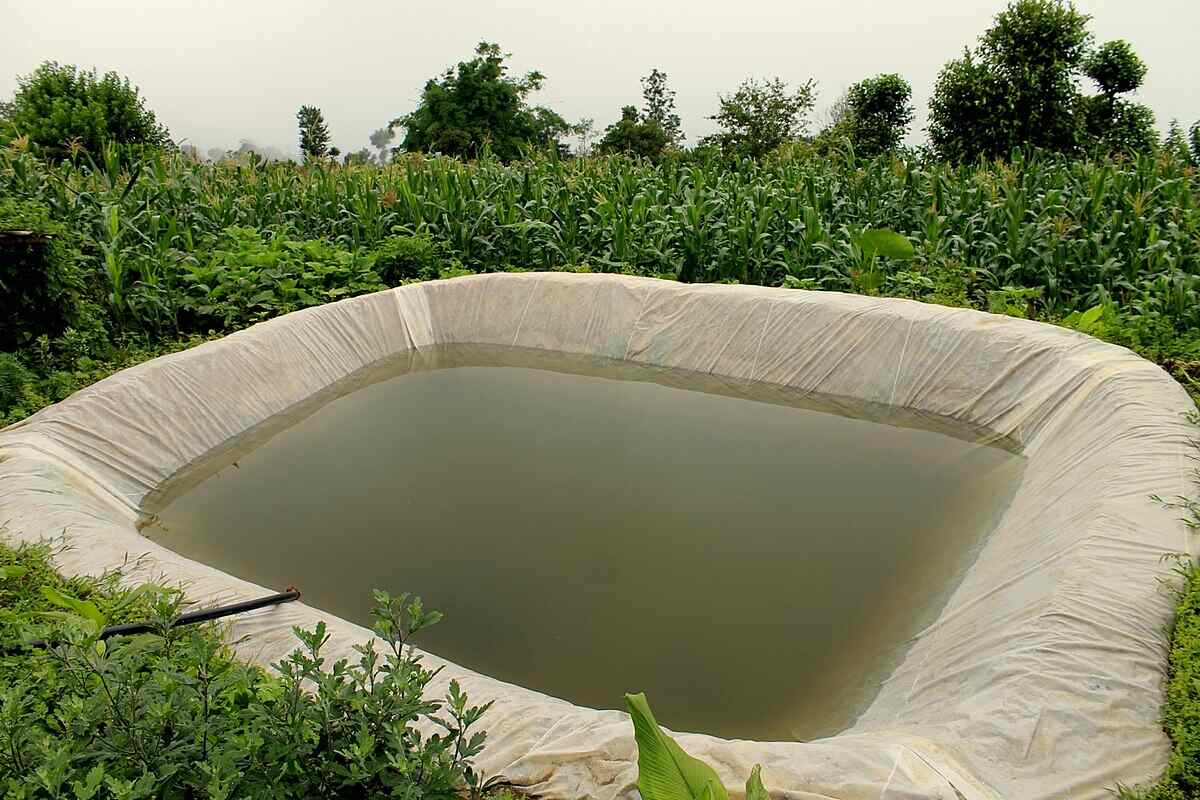
Plastic ponds are made using materials like HDPE or LDPE tarpaulin sheets, making them portable and easy to install. These are popular for small-scale and backyard fish farming.
- Advantages:
- Quick installation and low cost.
- Can be relocated easily.
- Challenges:
- Less durable than concrete ponds.
- Prone to wear and tear over time.
Pro Tip: Upgrade plastic ponds with high-quality geomembrane pond liners to extend their lifespan and enhance water retention.
5. Earthen Ponds
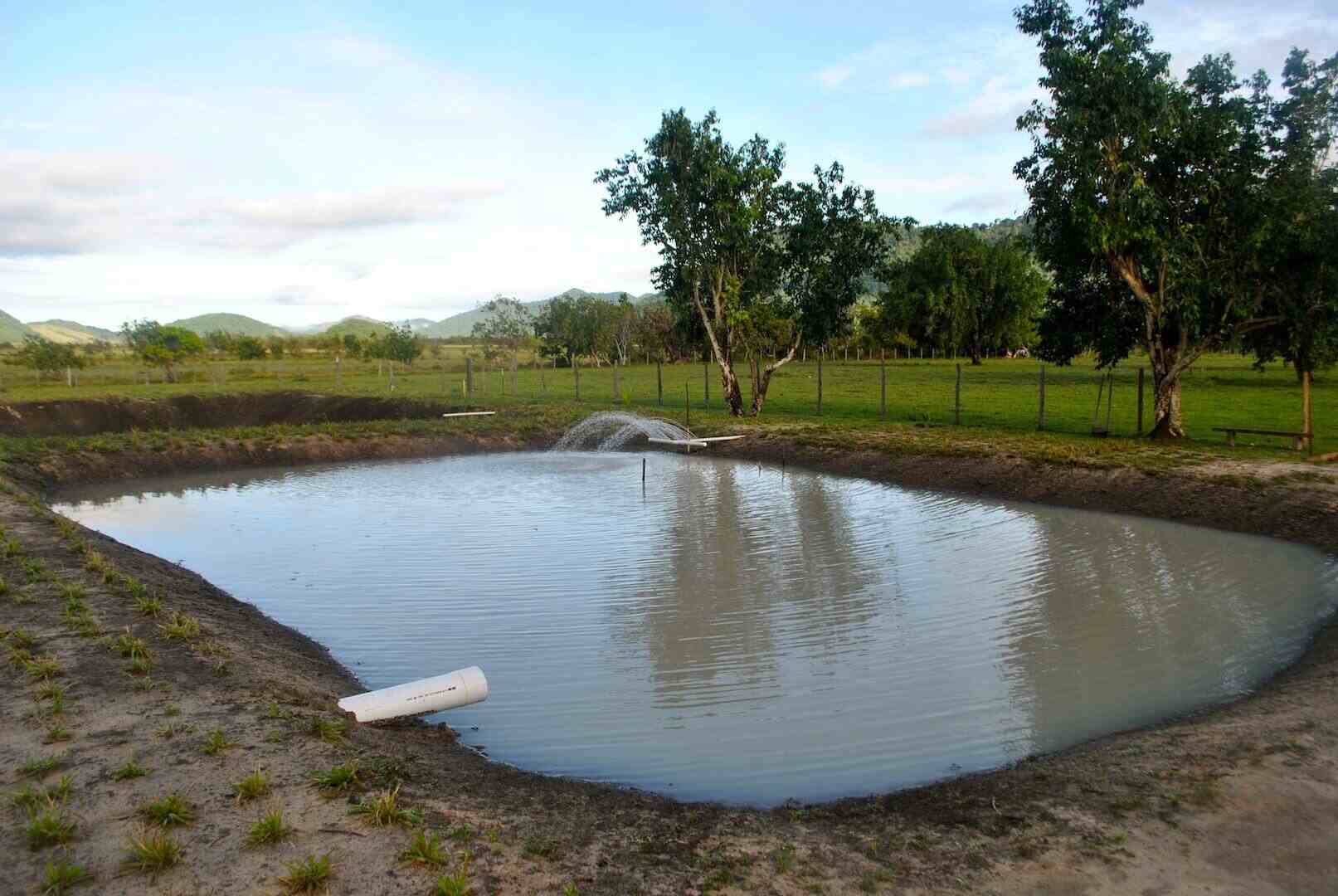
Earthen ponds are large natural or semi-natural ponds constructed by reshaping land contours. They are typically used for extensive fish farming.
- Advantages:
- Mimics the natural habitat of fish.
- Cost-effective for large-scale farming.
- Challenges:
- Vulnerable to water loss through seepage.
- Harder to control water quality compared to other ponds.
6. Integrated Ponds
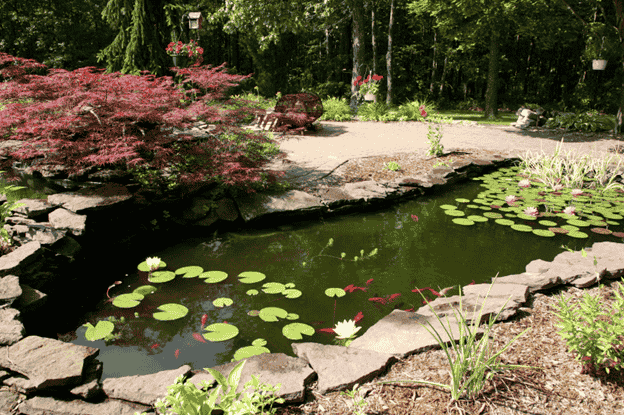
Integrated ponds are designed for multiple purposes, such as combining fish farming with agricultural activities like irrigation or livestock farming.
- Advantages:
- Promotes resource efficiency.
- Cost-effective and eco-friendly.
- Challenges:
- Requires meticulous planning and management.
The Role of Geomembrane Pond Liners in Fish Farming
Geomembrane pond liners are a game-changer in modern aquaculture. These liners are made from HDPE or LDPE materials and serve as a protective layer to prevent water seepage.
Benefits of Using Pond Liners:
- Water Conservation: Prevents water loss, especially in areas with porous soil.
- Improved Water Quality: Reduces contamination by separating the pond base from external pollutants.
- Durability: Withstands extreme weather conditions, ensuring long-term usage.
- Cost-Effective: Saves money on maintenance and reduces the need for frequent repairs.
Whether you’re building excavated ponds, plastic ponds, or earthen ponds, geomembrane liners ensure higher productivity and sustainability in your fish farming venture.
How to Choose the Right Pond Type for Your Fish Farming Needs
When deciding on the type of pond, consider the following factors:
- Scale of Operation: Choose larger ponds like earthen or embankment ponds for commercial farming, while plastic ponds are ideal for small-scale farming.
- Budget: Concrete ponds may be expensive initially but offer long-term benefits.
- Fish Species: Some species require specific pond conditions; for example, freshwater species thrive in earthen ponds.
- Water Source: Ensure a reliable water source, such as rainwater or groundwater, depending on the pond type.
Conclusion
Fish farming ponds are the cornerstone of successful aquaculture. From excavated ponds to integrated ponds, each type offers unique benefits tailored to different farming needs. Incorporating geomembrane pond liners further enhances the efficiency and longevity of these ponds, ensuring sustainable fish farming practices.
Whether you’re just starting out or scaling up your operations, selecting the right pond type will make all the difference. So, get started on your fish farming journey and enjoy the rewards of a thriving aquaculture business!
FAQs
1. What is the most cost-effective type of fish pond?
Plastic or tarpaulin ponds are the most affordable and ideal for small-scale fish farming.
2. Why are geomembrane liners important?
They prevent water loss, improve water quality, and ensure pond durability, making them crucial for efficient fish farming.
3. Can I use earthen ponds for commercial fish farming?
Yes, earthen ponds are commonly used for large-scale farming due to their natural habitat-like environment.